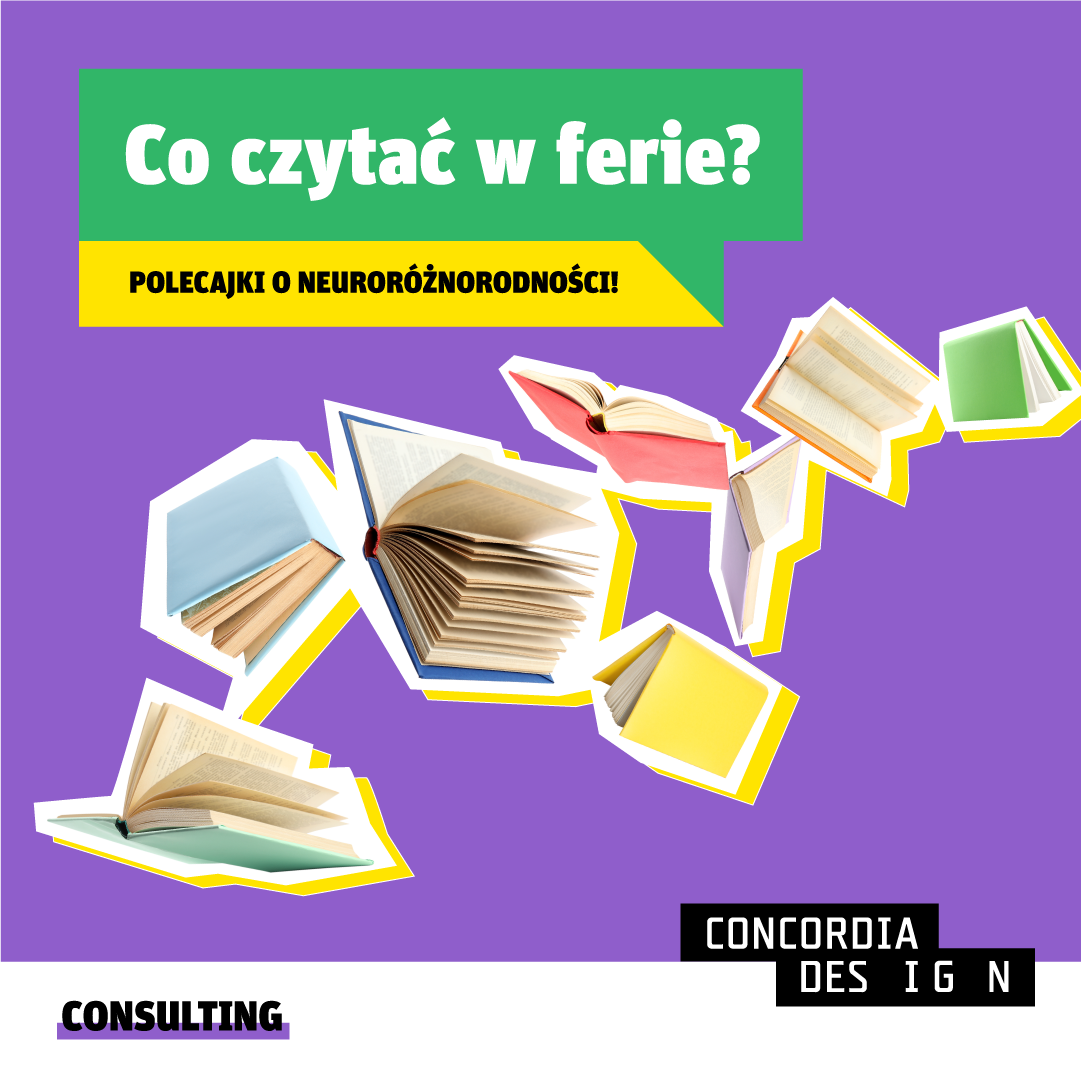Discovering the richness of human brains - winter book recommendations on neurodiversity

Neurodiversity points to the natural diversity of human minds, while highlighting the strengths of neuroatypical people such as visual memory, pictorial thinking, concentration, accuracy, creativity, imagination, perseverance, among others.
Initially, neuroatypical individuals were referred to as those on the autism spectrum and with Asperger's syndrome. Over time, the definition has evolved, and most often these individuals are described as those whose nervous system develops differently than typical, causing them to perceive and interact with the world in different ways.
This time we have for you book recommendations in the area of neurodiversity, collected by the Expert People Team of the Accessible Design Project.
"Sparks in my head" (Elle McNicoll) - the story of 11-year-old Addie on the autism spectrum, who discovered the power to change the world. The girl experiences reality differently and perceives stimuli more strongly than other children, but faces incomprehension - including among adults. Whenever something interests her, she won't rest until she learns everything about it. Her life changes when she learns that there used to be witch trials in her town. From then on, she takes up the fight for justice, respect and acceptance of otherness. The book, thanks to its first-person narrative, provides a glimpse into the mind of a girl who strives to restore honor to women who were unjustly judged and misunderstood for their otherness.
"I was an autistic child" (Temple Grandin, Margaret M. Scariano) - the book combines scientific facts about the autism spectrum, as well as Temple Grandin's personal experiences. It is a study of deeply hidden memories and feelings and an insightful attempt to explain the mindset of a person on the autism spectrum. The book reveals the remarkable story of a person on the spectrum who, with the right support, care and understanding from those around her combined with her own passion, motivation and self-doubts, learned to care for her neurodiversity and overcome her fears. The spectacular course of development described in the book still arouses much commentary and controversy today.
"A Girl on the Spectrum" (Ewa Furgal) - a book that breaks the common belief that the autism spectrum mainly affects boys and men. The author, who was diagnosed with Asperger's syndrome at the age of 36, was one of the first in Poland to address the marginalized topic of the relationship between the spectrum and gender. The book is thus a collection of available knowledge on the spectrum in women, juxtaposed with the author's personal experience. It touches on the social perception of women on the spectrum, touches on the emotional layer, work life, relationships, health, or recognizing one's sexuality.
"We made it, you can make it too! A Guide to Living in the World for People with Asperger's Syndrome" (Tony Attwood) , a collection of advice formulated for people on the autism spectrum by people with Asperger's syndrome or on the spectrum. Each of the 17 chapters is devoted to a specific difficulty accompanying ASD, as identified by an innovative study conducted by Dr. Tony Attwood, Craig Evans and Anita Lesko. The book is encircled with colorful artwork of people on the autism spectrum.

